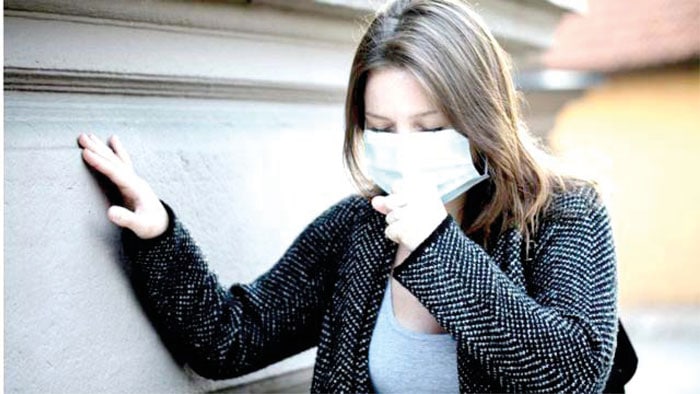A new study found the coronavirus loses most of its ability to be transmitted from person to person 20 minutes after becoming airborne. The findings emphasize that close contact for a prolonged duration is still going to be the highest risk of transmission. Vaccination, mask wearing, and physical distancing are still the best ways to protect yourself against COVID-19. As the fast-moving Omicron variant of the coronavirus continues to sweep across the United States, scientists are learning more about the virus and how it spreads.
A new study from the University of Bristol in England determined that the novel coronavirus, SARS-CoV-2, loses most of its ability to transmit from one person to another 20 minutes after becoming airborne.
At this point, the virus was found to lose 90 percent of its potency. “A decrease in infectivity to approximately 10 percent of the starting value was observable for SARS-CoV-2 over 20 minutes, with a large proportion of the loss occurring within the first 5 minutes after aerosolisation,” scientists wrote in the paper, which has not yet been published or peer-reviewed.
The research suggests the coronavirus does not survive for long outside of the human host’s body and loses its infectiousness rather quickly. How does COVID-19 spread? So, how can we use this information to evaluate our risk in different situations? First, it’s important to understand how COVID-19 spreads.
The primary way the coronavirus is transmitted from person to person is through respiratory droplets. “Those are large water droplets that are expelled when people cough or sneeze, and they have virus inside of them,” said Taylor Nelson, DO, an infectious disease specialist at University of Missouri Health Care.
When someone is in close contact with a person with an infection who expels these droplets, they can contract an infection if those droplets reach their eyes, mouth, or nose. What can you learn in a month without alcohol? It’s never a bad time to check in on your relationship with alcohol. Learn how to navigate a month of sobriety with the month-long Alcohol Reset Challenge. How long is the coronavirus infectious when it’s in the air? How long the coronavirus is infectious when it’s in the air is a question scientists have been trying to pinpoint since the beginning of the pandemic.
Previous studies relied on spraying virus into rotating sealed chambers to create an aerosolized environment. Using this technique, researchers determined that the virus could still be detected for 3 hours.
However, such experiments do not accurately replicate what happens when a person with an infection exhales. For the new study, scientists developed a device that uses an electric field to levitate tiny, virus-containing droplets. While controlling for temperature, humidity, and UV light intensity, researchers tested the infectiousness at various lengths of time from 5 seconds to 20 minutes.










